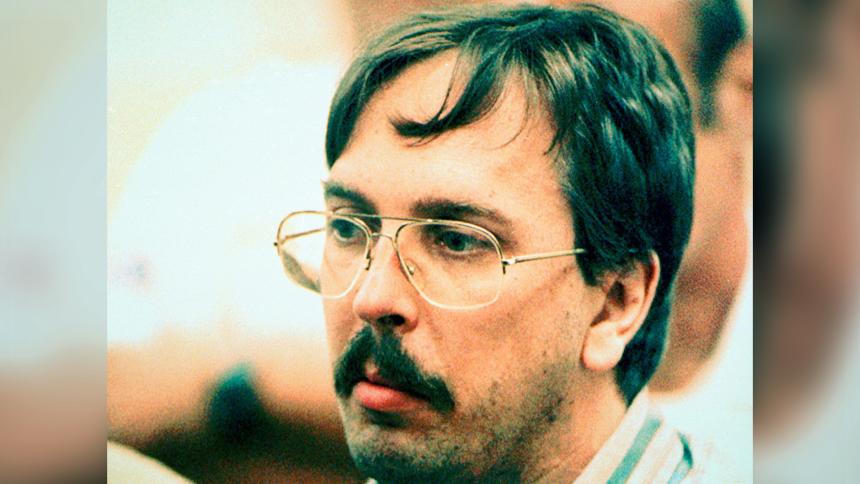
Joel Rifkin: New York's most prolific serial killer
Fans of the sitcom Seinfeld may remember the episode where Elaine is mortified to find herself dating a guy with the same name as a serial killer: Joel Rifkin. But people in the UK might not know the true extent of Rifkin’s crimes, which horrified New York in the early 1990s.
The Turtle
Joel Rifkin was born in 1959 to a young, unwed couple who were still in college and didn’t feel able to raise a child. The infant was duly adopted by the Rifkins, who provided the young Joel and his sister with a warm, loving home.
Despite the comfortable domestic setting, Rifkin’s childhood in East Meadow, New York was not a happy one. As a stereotypical introverted misfit, he was targeted by school bullies who subjected him to humiliating pranks and dubbed him ‘The Turtle’ because of his hunched posture and slouching gait. One of his peers later recalled that Rifkin was ‘subtly obnoxious, like his presence annoyed you’.
Rifkin didn’t even have the solace of excelling academically, since his undiagnosed dyslexia caused him to struggle with his studies. With his first fumbling attempts at relationships being scuppered by bullies (he was once chased out of a pizza restaurant while on a date), Rifkin fell increasingly into his own world. He began meeting with sex workers while still in high school and his mind swirled with hate-fuelled fantasies of raping and killing women.
A downward spiral
After some failed attempts at higher education, Rifkin took odd jobs but his shambolic, disinterested attitude rubbed employers up the wrong way. His manager at a music store recalled him as being ‘a total piece of work. The guy couldn’t count to 10’. While he did have some traditional interests, such as writing, gardening and photography, he spent most of his spare cash on sex workers and was frequently robbed by the women and their pimps.
The downward spiral worsened in 1987 when Rifkin’s father, who was stricken with cancer, chose to take his own life rather than endure any more pain. A distraught Rifkin delivered a heartfelt speech at the funeral, moving onlookers to tears. Months later, Rifkin was arrested for trying to solicit sex from an undercover policewoman. This brush with the law didn’t deter him from his increasingly dark path.
The killings begin
By the late 80s, Rifkin was making more headway with his gardening career, but his violent fantasies had become too strong and persistent to resist any longer. In 1989, he went out in Manhattan to find a sex worker, settling on a vulnerable, crack-addicted girl he knew as ‘Susie’. He took her back to his place in Long Island, had sex with her, and beat her savagely.
As he later said in a prison interview, he attacked her with a howitzer shell he’d picked up in a flea market, hitting her with the heavy piece of ammunition ‘20, 30 times until my arms got tired’.
She somehow survived the onslaught, leading Rifkin to strangle her before calmly dismembering the corpse for disposal. He later recalled how he ‘put two arms in one bucket, two legs in the pan, and the head in another bucket’. Her head was later discovered at a golf course and it took decades before ‘Susie’ was properly identified as Heidi Balch.
More than a year elapsed before Rifkin took his next life – another sex worker, named Julie Blackbird, whose ‘pseudo-Madonna’ look attracted the killer. After spending the night together, Rifkin beat her with a table leg and choked her to death. Once again he cut the body up, but was more diligent about the disposal, submerging the pieces in buckets of concrete which he then dumped into waterways.
Catching the killer
Rifkin was now addicted to murder, to the point where the care he put into covering up the killings went out the window. Another victim, Barbara Jacobs, was stuffed into a cardboard box and dropped into the Hudson River, with firefighters on a training exercise discovering her just hours later. A subsequent victim, Mary Ellen DeLuca, was simply left at a layby.
The killings went on and on. Since Rifkin preyed on some of the most marginalised people in New York – women who were sex workers and often hooked on crack and heroin – the deaths were not a high priority for detectives. His murderous rampage was only brought to an end by chance, in June 1993, when state troopers noticed him driving a pickup truck without a licence plate.
Rifkin’s mental state was in disarray by this point and he led the troopers on a lengthy pursuit before ramming his truck into a pole. Approaching the vehicle, the troopers were surprised to find a decomposing body wrapped in a tarp.
Although Rifkin was happy to disclose the grisly details of his killing career to detectives, he pleaded not guilty on grounds of insanity. Jurors at his trial weren’t buying it and took only a couple of hours to find him fully responsible for his actions. Rifkin kept falling asleep during parts of the trial, which his lawyer put down to an allergic reaction to bologna sandwiches.
Currently serving a 203-year sentence, Joel Rifkin is thought to have murdered at least 17 women, earning him the very dubious distinction of being New York’s worst-ever serial killer.







